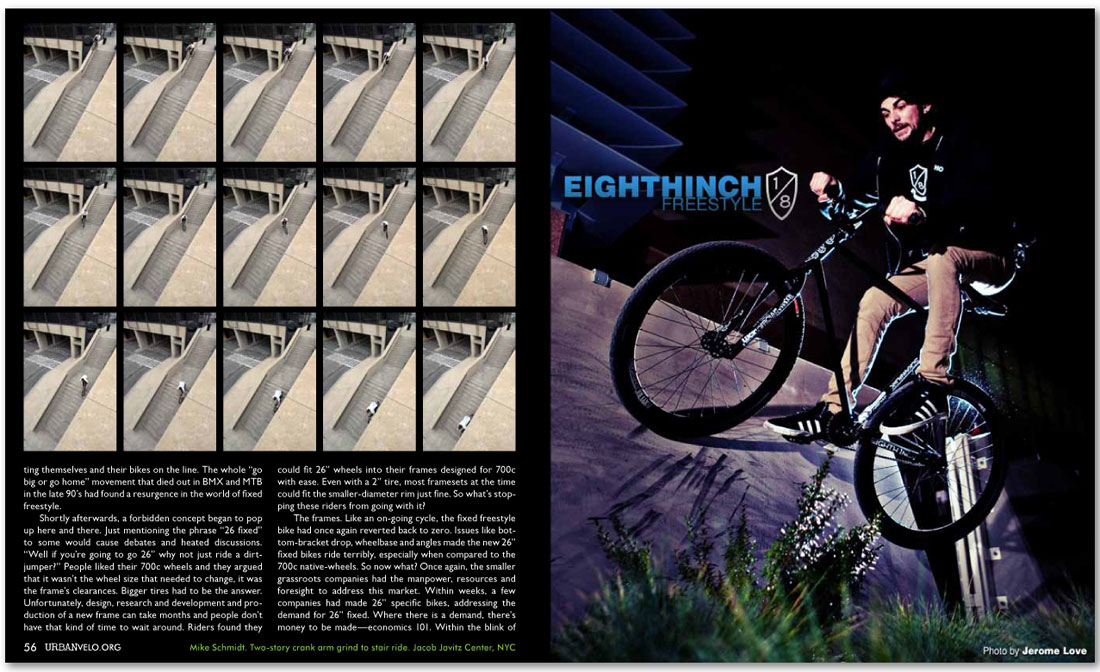


ting themselves and their bikes on the line. The whole “go big or go home” movement that died out in BMX and MTB in the late 90’s had found a resurgence in the world of fixed freestyle.
Shortly afterwards, a forbidden concept began to pop up here and there. Just mentioning the phrase “26 fixed” to some would cause debates and heated discussions. “Well if you’re going to go 26” why not just ride a dirt-jumper?” People liked their 700c wheels and they argued that it wasn’t the wheel size that needed to change, it was the frame’s clearances. Bigger tires had to be the answer. Unfortunately, design, research and development and production of a new frame can take months and people don’t have that kind of time to wait around. Riders found they could fit 26” wheels into their frames designed for 700c with ease. Even with a 2” tire, most framesets at the time could fit the smaller-diameter rim just fine. So what’s stopping these riders from going with it?
The frames. Like an on-going cycle, the fixed freestyle bike had once again reverted back to zero. Issues like bottom-bracket drop, wheelbase and angles made the new 26” fixed bikes ride terribly, especially when compared to the 700c native-wheels. So now what? Once again, the smaller grassroots companies had the manpower, resources and foresight to address this market. Within weeks, a few companies had made 26” specific bikes, addressing the demand for 26” fixed. Where there is a demand, there’s money to be made—economics 101. Within the blink of
Mike Schmidt. Two-story crank arm grind to stair ride. Jacob Javitz Center, NYC